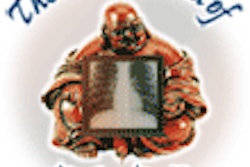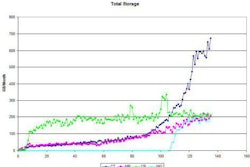
As PACS applications became more sophisticated and complex, the need for one or more full-time individuals to support these systems became obvious. Someone had to take responsibility for data integrity and availability of the images and related information, so the profession of a PACS system administrator (SA) evolved as both clinical (radiologic technologists) as well as IT folks took up the slack to support the PACS.
These early SAs were basically learning on the job because no dedicated training was available. Over the past five to 10 years, professional organizations and annual meetings began to include dedicated tracks to educate these folks, most notably the Society for Imaging Informatics in Medicine (SIIM, formerly the Society for Computer Applications in Radiology), as well as the University of Rochester's PACS meetings in San Antonio. In addition, several academic and commercial training institutes started to offer training courses, seminars, and hands-on workshops.
There are now computer-based training courses as well as textbooks on the subject of PACS, and the essential standards that make these systems work, i.e., DICOM and HL7. Vendors also provide SA training, but it is generally recognized that these vendor-specific training sessions do not address system fundamentals and mostly concentrate on the specific user interfaces of their equipment.
As these training classes developed, the need for certification became obvious -- to provide some indication of acquired skills, and also set a baseline for training.
Certification
When professional organizations began defining certification requirements, it seemed that almost no one could agree upon the job requirements of a typical SA. This is because the SA's job varies depending on the person's background, strength of other departments, facility culture, and history.
For example, SAs with a strong IT background might be able to troubleshoot connectivity issues between a modality and the PACS by themselves (such as by using a network sniffer that shows the DICOM protocol data units and TCP/IP packets) while other SAs would have to leave this up to their IT counterparts.
After many meetings and discussions on the topic of SA qualifications, three different tracks with three different career paths seemed to evolve, even though in many cases, all these skills could be present in one SA. But it also became clear that a common ground and vocabulary are required -- i.e., all SAs need to be able to communicate on the same level, with a basic set of clinical and technical vocabulary and understanding.
That means that people with an IT background need to know the difference between a PA and LAT chest so they can configure the proper hanging protocol on a radiology workstation. Similarly, it would mean that the clinical folks need to know the difference between a switch and a router in case they need to find out why the network performance degrades and it suddenly takes twice as long for images to be exchanged.
After establishing this clinical and IT foundation for all SAs, there are those professionals who specialize in standards so that they could assist in something such as mapping HL7 to DICOM attributes at an interface broker, to ensure that all appropriate exams show up on a modality worklist following a technical career track, i.e., a technical analyst.
The second group of professionals would concentrate on the PACS clinical workflow issues, so they can redesign a system to become more effective and efficient following a workflow analyst career track.
A third group might also be involved with the coordination and project management of new modalities, speech recognition implementation, 3D, or other projects following the organizational career track.
Certification options
Currently, two options are available for SA certification: the PACS Administrators Registry and Certification Association (PARCA) and the Certified Imaging Informatics Professional (CIIP) program. The first and second career tracks mentioned above are addressed by the PARCA certifications, while the CIIP designation covers the third track.
Before going into the differences between these two, let's first concentrate on the different certification requirements. These requirements are posted online, at www.pacsadmin.org for PARCA and www.abii.org for the CIIP.
Although the PARCA certification guidelines are more extensive than the CIIP requirements, which only have a test content outline, enough details are available to compare both certifications.
 |
| Chart courtesy of Herman Oosterwijk, OTech. |
Both certifications require clinical and IT credentials. In the case of CIIP, this is achieved by having specific education and certification requirements, combined with a certain amount of experience. In the case of PARCA, this is achieved by taking the CPAS exam, which extensively tests the clinical and IT skills of a candidate. Both of these methods have their advantages: The CIIP approach favors experience over current knowledge, while the PARCA approach does not require experience, but requires a candidate to prove current skills and knowledge.
For professionals who would like to enter this field but lack the required experience to take the CIIP exam, a good option for SA certification is to take the PARCA route. However, even if you have the required experience, it might be a good choice to take the PARCA CPAS exam in any case, to assess your current skill level. Several candidates that took both the CIIP and CPAS exams expressed that the CPAS indeed is good preparation for the CIIP.
PARCA has two different certification routes: the Certified PACS Interface Analyst (CPIA) and the Certified PACS System Administrator (CPSA) track (T1 and T2 in the figure). These can then be topped off by the Certified PACS System Manager (CPSM) capstone certification. The CPIA deals with interface standards such as DICOM, HL7, and IHE; the CPSA requires knowledge about PACS components, workflow, integration, and security. The CPSM requires hands-on networking exercises such as setting up a VPN.
The CIIP certification deals with many of these topics, but also covers subjects such as project management, procurement, operations, training, education, and systems management (T3 in the figure).
Differences between PARCA and CIIP
Besides the different areas and skills that these certifications address, their approaches to certification also differ. Some of the differences will almost certainly disappear as the certifying agencies get a few more years of experience under their belts; some of them are fundamentally different.
One difference that will disappear over time is the level of maturity: PARCA has been available since early 2005, while CIIP had its first pilot exam in June. Consequently, books and study guides are available for PARCA, while CIIP has only a ministudy guide available online.
Also, most training institutions have adjusted their programs to ensure all PARCA requirements are covered, while work is going on to define the CIIP learning objectives. The latter is an effort undertaken by SIIM in the form of its Educator Advisory Network (EAN).
In addition, the test structures are dissimilar. The CIIP exam consists of a fixed set of questions (for now), while the PARCA exam varies each time it is conducted because the individual items on the test are randomly drawn from a question pool, so that no two exams are identical.
The way the exams are delivered is also quite different. PARCA has an anytime-anywhere philosophy, providing the exam online. This means that it is available for professionals from remote locations who might not have travel funds readily available, particularly those outside the U.S. Consequently, PARCA certificates are issued to SAs throughout the world. CIIP exams will be conducted about three or four times a year at predetermined testing centers and will be proctored.
The exam costs differ as well. The CIIP exam costs $400, with a $200 retake fee if you don't pass. The cost for the CPAS exam is $100 per exam and $200 for the CPIA or CPAS, with a "free" retake capability of two times within a year of taking the test. PARCA also requires a $30 yearly membership.
The organizational structure is also different: The CIIP is managed under the auspices of the American Board of Imaging Informatics (ABII), which was founded by SIIM and the American Registry of Radiologic Technologists (ARRT), while PARCA is an independent organization.
It's not about the piece of paper
Certification is a major effort and, as many people have said before, the race is not about the finish but all about the journey. I have firsthand experience running races, having finished two New York City Marathons. It truly is not about the competition but about the many months of training and preparation.
The same holds true for SA certification -- it takes many months of studying, reading textbooks, taking classes face-to-face or using computer-based training, and attending professional conferences. The effort should not be underestimated, but it is an excellent opportunity to learn about subjects an SA needs to know, now and in the future. It is particularly helpful to strengthen the weak areas in an SAs background: IT knowledge for those coming from the clinical arena, and clinical knowledge for those coming from the IT sector.
Certification is also about empowerment: What better way to gain the knowledge and skills to better manage these complicated and sophisticated systems, and ultimately provide better patient care? SA management includes taking care of image quality issues; improving workflow; reconciling studies, exams, and patients; and supporting the expedient processing and reporting of a patient's critical images and related information.
Conclusion
PARCA, and recently CIIP, have achieved a high level of acceptance, as witnessed by the fact that the combined number of PARCA- and CIIP-certified professionals is already in the hundreds. The titles are showing up on business cards and in job requisitions.
The thousands of professionals who are preparing themselves for certification still have a long way to go. Surveys have found that more than 90% of SAs believe certification is important, while more than 80% are seriously considering taking the exams.
Each certification has its strengths and weaknesses as to what's covered as part of its requirements. Each one supports distinctly different career tracks, although many professionals might opt to go for both, ensuring that they master not only the technical but also the organizational skills.
As time passes, we will better understand whether our best guesses of the required skills actually take hold. There will also be the need for continuing education requirements, as many new modalities are just now becoming clinical reality, such as optical coherence tomography for ophthalmology or tomosynthesis for digital mammography -- and just wait until pathology comes online with digitized images.
New challenges require additional knowledge and skills -- that is what being involved in this high-tech industry is all about, and change is the only true predictor. SA certification will help PACS administrators master those skills in a consistent manner. In turn, this will provide those who are certified with excellent career opportunities. In addition, those hiring SA professionals will be provided with a benchmark upon which to base their employment decisions.
By Herman Oosterwijk
AuntMinnie.com contributing writer
September 20, 2007
Herman Oosterwijk is part of the SIIM EAN (Education Advisory Network), which is currently defining the CIIP learning objectives. He is also a member of the PARCA advisory board. The PARCA Web site has a list of training schools and organizations as well as resources at www.pacsadmin.org/links.php.
Reprinted from www.otechimg.com by permission of the authors. To receive the regular OTech newsletter, visit www.otechimg.com/newsletters.cfm?menu=pubs or visit www.otechimg.com for information on PACS training classes, books, and e-learning.
Related Reading
Achieving the Zen of PACS administration, July 23, 2007
PACS administrator certification program gets under way, May 30, 2007
SIIM readies qualification program for PACS administrators, November 15, 2006
SIIM, ARRT to launch CIIP program, September 7, 2006
PACS administrator certification efforts heat up, June 20, 2006
Copyright © 2007 OTech Health Care Technology Solutions



















